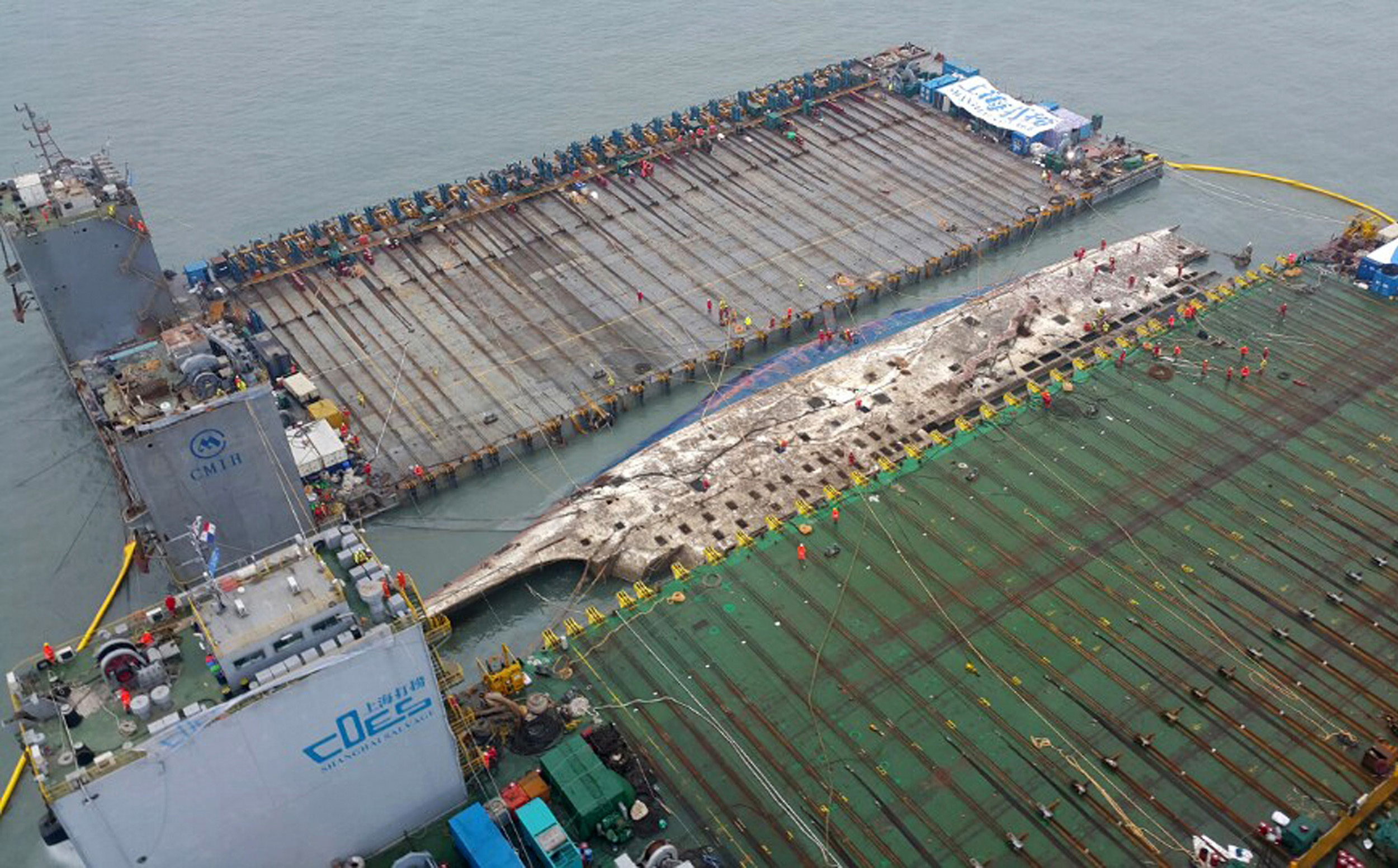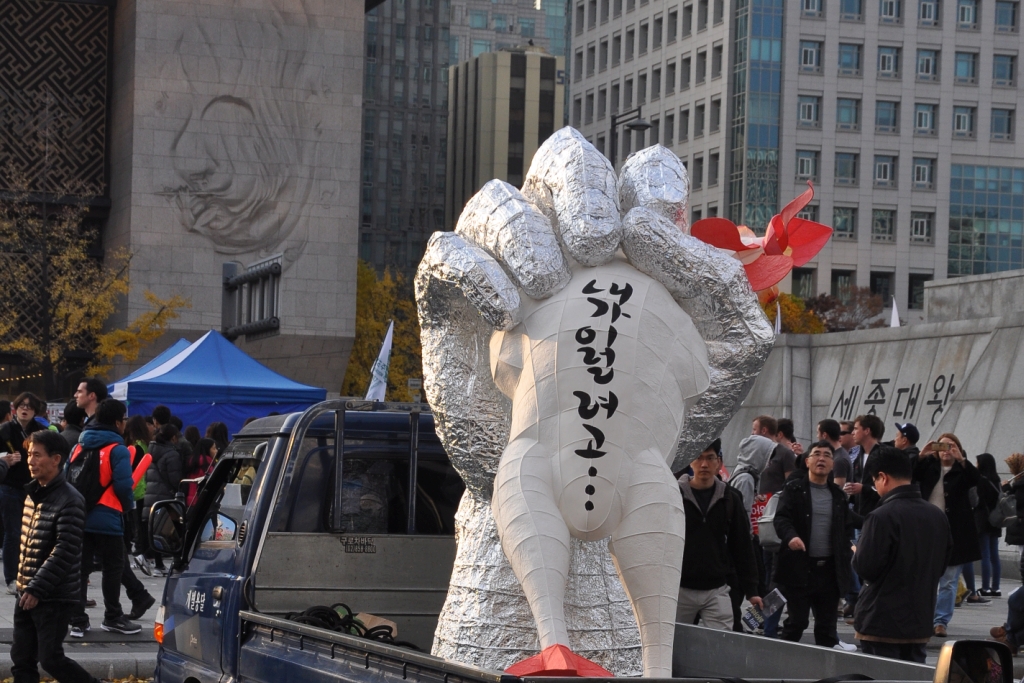
With the Sewol's Salvage, Closure May Be Near
Between two floating platforms emerges the rusty hull of a sunken ship.
The sight is startling. The Sewol capsized nearly three years ago, on Apr. 16, 2014, killing 304 people. Since then, there has been much talk of the vessel being raised, but little action. To see the physical form with my own eyes, even through the medium of a television screen, feels like a dream. Or the end of a long-running nightmare.
I came back to Seoul for good in June 2014. The country was still in the grip of enormous grief over the sinking two months back. So incompetent had the government’s handling been that many asked just how a disaster of this magnitude could have taken place in contemporary South Korea, ostensibly a fully-industrialized democracy. The deaths were irreversible, but the question of responsibility remained.
Family members began taking to the streets to demand answers. In July 2014, tents went up for the first time in Gwanghwamun Plaza, downtown Seoul. (They are still there today.) 15 parents of the dead students — 250 from a single high school in Ansan died on the ship — embarked on a hunger strike. The most resilient of them, Kim Young-oh, continued for 46 days. Photos of his emaciated body left me shaking with sadness, and anger at the Park Geun-hye administration’s indifference.
That was just the beginning of a long fight. Park and her allies agreed to a special law that would launch an independent inquiry, but watered down the commission’s mandate through an executive decree. The salvage operation was delayed time and again. The government cut the inquiry short by pulling its funding. The protest in Gwanghwamun continued. Families marched around the country. Some — those of the nine missing passengers whose bodies had not yet (and have still not yet) been recovered — moved into makeshift housing at Paengmok Port, close to the site of the accident, so that they could continue the vigil.
[iframely]https://cdn.knightlab.com/libs/timeline3/latest/embed/index.html?source=1yQuyew-CXlhP24ORADFLujMZgC3uNshBkyElB-85rac&font=Default&lang=en&initial_zoom=2&height=650′ width=’100%’ height=’650′ frameborder=’0′[/iframely]
Even without intentionally keeping track of the families’ progress, it has been difficult to ignore their plight. Rallies on major anniversaries drew tens of thousands, whom I passed by on way in and out of the city. Shortly after a coffee meeting nearby, I stumbled on an event in Gwanghwamun, where some parents were having their hair shorn — an extreme gesture of protest in Korea — to express their rage. One mother screamed so loudly that her voice seemed to shake the core of the city: “The Republic of Korea is rotten!!!”
You won’t find me arguing against this sentiment. South Korea remains a deeply corrupt country, run more on private connections and backroom dealings than on national consensus or public interest. If you disagree, just look at the Choi Soon-sil scandal that has brought down the president. This is just a tip of the iceberg.
Still, the government’s approach to the Sewol disaster had me reeling. The presidential Blue House could never account for Park Geun-hye’s whereabouts during a seven-hour period on the fateful day of the sinking. Conservatives expended more energy on vilifying the families as communists, vultures and followers of North Korea than on trying to do right by them.
Now the Sewol is reemerging, less than two weeks after Park Geun-hye was ousted from office by the Constitutional Court. It may very well be a coincidence. But the impression that Park had been blocking the salvage operation this whole time is too strong to ignore, especially given her record.
The raising has only begun. Once the ship is sufficiently brought to the surface, it will be carried on a semi-submersible ship to Mokpo New Port, the nearest big harbor. There will then be an attempt to recover the missing bodies, as well as an examination of the vessel to determine the exact cause of the tragedy.
With these actions, there will finally be a modicum of closure for the families and for the nation. It has taken three years to get this far.
Cover Image: In this photo provided by West Regional Headquarters Korea Coast Guard, workers prepare to lift the sunken Sewol ferry, center, in waters off Jindo, South Korea, Thursday, March 23, 2017. The 6,800-ton South Korean ferry emerged from the water on Thursday, nearly three years after it capsized and sank into violent seas off the country’s southwestern coast, in an emotional moment for the country that continues to search for closure to one of its deadliest disasters ever. (Credit: West Regional Headquarters Korea Coast Guard)

